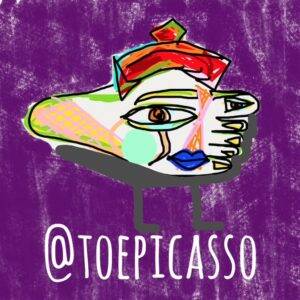When dealing with an unknown foot ailment, self-diagnosis can be tricky. Many different conditions can cause uncomfortable bumps or lumps on the foot, and while some are relatively harmless, others may become serious if left untreated. Two of the most common culprits are bunions and corns—but because both can create painful bumps, it’s easy to confuse the two. Understanding the differences is key to getting the right treatment.
What is a Bunion?
A bunion is a bony deformity that develops at the base of the big toe joint. Over time, the big toe begins to angle inward toward the other toes, causing a noticeable bump on the inside of the foot. This misalignment is often linked to factors such as poor foot mechanics, flat feet, improper footwear (like narrow or high-heeled shoes), or hereditary predisposition.
Bunions typically start small but worsen gradually. In their early stages, they may only cause mild discomfort when wearing tight shoes. As the bunion progresses, however, it can become red, swollen, and painful to the touch. Left untreated, bunions can restrict mobility, make it difficult to find shoes that fit properly, and significantly limit physical activity. Unlike corns, bunions are a structural issue within the foot and cannot be resolved without medical treatment—often requiring surgical correction for lasting relief.
What is a Corn?
Corns are small, hardened patches of skin that develop as a protective response to friction or pressure. They commonly appear on the tops or sides of toes but may also form on weight-bearing areas of the sole or heel, where they are often referred to as calluses. Unlike bunions, corns are not caused by bone misalignment but rather by repetitive rubbing—often from tight shoes, walking barefoot, or frequent running and athletic activity.
Corns themselves are not dangerous, but they can be painful, especially when pressed. Over time, untreated corns may cause ongoing discomfort, tenderness, and even blistering. Because bunions alter the way the foot bears weight, they can actually contribute to corn formation by increasing pressure and friction on surrounding areas of the foot.
Bunions vs. Corns: The Key Differences
While both bunions and corns can create bumps on the foot, the underlying causes and long-term effects are very different.
Cause: Bunions are a bone and joint misalignment, while corns are skin thickening caused by friction.
Appearance: Bunions form as a large, hard bump at the base of the big toe, whereas corns are small, round, and made of toughened skin.
Pain: Bunions tend to cause increasing, persistent pain that worsens over time. Corns cause discomfort primarily when pressure or friction is applied.
Treatment: Bunions require medical management and often surgery for permanent correction. Corns can usually be managed by reducing friction, changing footwear, and using protective pads.
The most important distinction is that bunions progressively worsen without treatment, while corns are generally harmless but irritating. Because bunions can impact mobility and overall foot health, anyone with a noticeable bump on their foot should seek a professional evaluation to ensure the correct diagnosis and treatment plan.
Treating Bunions vs Corn
Corns are typically straightforward to treat and, in many cases, can be managed at home. Over-the-counter options such as medicated pads, callus-removing solutions, and cushioned inserts can reduce discomfort and pressure. The most effective long-term prevention, however, is wearing properly fitting shoes with adequate room for the toes. While these measures can provide relief, corns often return if the underlying cause—usually friction or pressure—remains. In situations where a bunion or another structural issue is creating the friction that leads to corns, permanent relief often requires correcting that root problem surgically.
Bunions, on the other hand, are more complex. Unlike corns, they involve a misalignment of the bone and joint, which will not go away with home care. Left untreated, bunions can become increasingly painful, interfere with walking, and limit shoe choices. Fortunately, treatment options have advanced significantly. Modern minimally invasive bunionectomy procedures are performed as simple outpatient surgeries, often completed in less than two hours. These procedures use very small incisions, cause minimal disruption to surrounding tissue, and require only light post-operative care. Patients remain awake and comfortable throughout the process, and many are able to walk, drive, and even return to work the same day with little to no pain.
Get Relief from Foot Pain
If foot pain is affecting your daily activities, you don’t have to live with it. At Northwest Surgery Center, our team specializes in diagnosing and treating conditions like bunions, corns, and other sources of foot discomfort. With years of expertise in minimally invasive techniques, we provide safe, effective solutions that help patients get back on their feet quickly. Schedule a free consultation today and take the first step toward lasting relief and improved mobility.

Leave A Comment